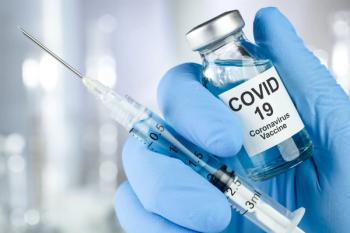
Increased Risk of Recurrence in NSCLC Found After Preoperative PTNB
Key Takeaways
- PTNB before surgery in stage 1 NSCLC patients is linked to higher local-regional recurrence and mortality rates.
- The study included 2026 patients, with 38.6% undergoing PTNB, showing higher recurrence rates in this group.
Individuals who had preoperative percutaneous transthoracic needle biopsy (PTNB) had an increased risk of local-regional recurrence in non–small cell lung cancer (NSCLC).
An increased risk of local-regional recurrence in stage 1
PTNB is a method used to
The retrospective study included patients 18 years and older who had a sublobar resection between January 2010 and December 2021. All participants had stage I NSCLC. Any participant who had concurrent malignancies, surgical margin that was positive for cancer, neoadjuvant therapy, synchronous or recurrent lung cancer, a tumor size greater than 3 cm, or missing data was excluded from the study. PTNB was performed by thoracic radiologists.
Freedom from recurrence (FFR) and overall survival (OS) acted as the primary end points of the study. Clinical image reviews were used to determine recurrence in all patients. Any recurrence in the ipsilateral thorax was considered local-regional metastasis, whereas distant metastasis was any metastasis in the contralateral lung and lymph node, contralateral pleura, or other lymph nodes or extrathoracic sites.
There were 2026 individuals included in the analysis, of whom 48.8% were men, and the mean (SD) age was 62.9 (9.6) years. A total of 38.6% of these patients had PTNB prior to their surgery.
Recurrence had a median follow-up duration of 46.5 months (range, 0.4-165.5 months) overall, with the median being 51.6 (0.4-160.7) months in the PTNB group and 44.4 (0.6-165.5) months in the non-PTNB group. There were 192 recurrences that were recorded at follow-up, of which 83 were local-regional and 81 were distant.
The rates of recurrence were higher in the PTNB group compared with the non-PTNB group (15.3% vs 5.8%) overall. This extended to the local regional recurrence rate (7.3% vs 2.1%) and distant recurrence rate (8.0% vs 3.7%). There was a shorter FFR in the PTNB group compared with the non-PTNB group (5-year rate, 82.8% vs 93.0%), even after a multivariable adjustment (adjusted HR, 1.43; 95% CI, 1.03-1.97).
Patients had a median of 49.7 (0.6-175.3) months of follow-up after the operation, during which a total of 211 deaths were reported: 77 deaths in the non-PTNB group vs 134 in the PTNB group. The 5-year OS for the PTNB group was lower compared with the non-PTNB group (84.0% vs 93.8%). The mortality risk was elevated in the PTNB group (unadjusted HR, 2.40; 95% CI, 1.81-3.18). This association was found even after adjustment (adjusted HR, 1.51; 95% CI, 1.11-2.07).
There were some limitations to the study. The data were obtained from a single hospital, which could prevent generalizability and encourage selection bias. Although individuals with tumors up to 3 cm in size were included, the efficacy of sublobar resection is not as well studied as lobectomy in treating stage I tumors. Other histopathologic factors could not be studied. Recurrence-free probability could have been overestimated due to the censoring of those who died without recurrence.
The authors concluded that PTNB was associated with local-regional recurrence in patients with stage I NSCLC. “Given the limitations inherent to our retrospective study design, further prospective investigations are necessary to validate these findings and clarify their clinical implications,” the authors wrote.
References
1. Ahn Y, Lee GD, Choi S, et al. Recurrence risk following percutaneous transthoracic needle biopsy in patients undergoing sublobar resection for stage I lung cancer. Radiology. 2025;317(1):e250415. doi:10.1148/radiol.250415
2. Lung biopsy. Johns Hopkins Medicine. Accessed October 14, 2025.
3. Can getting a biopsy make cancer spread? American Cancer Society. October 28, 2024. Accessed October 14, 2025.
Newsletter
Stay ahead of policy, cost, and value—subscribe to AJMC for expert insights at the intersection of clinical care and health economics.









































